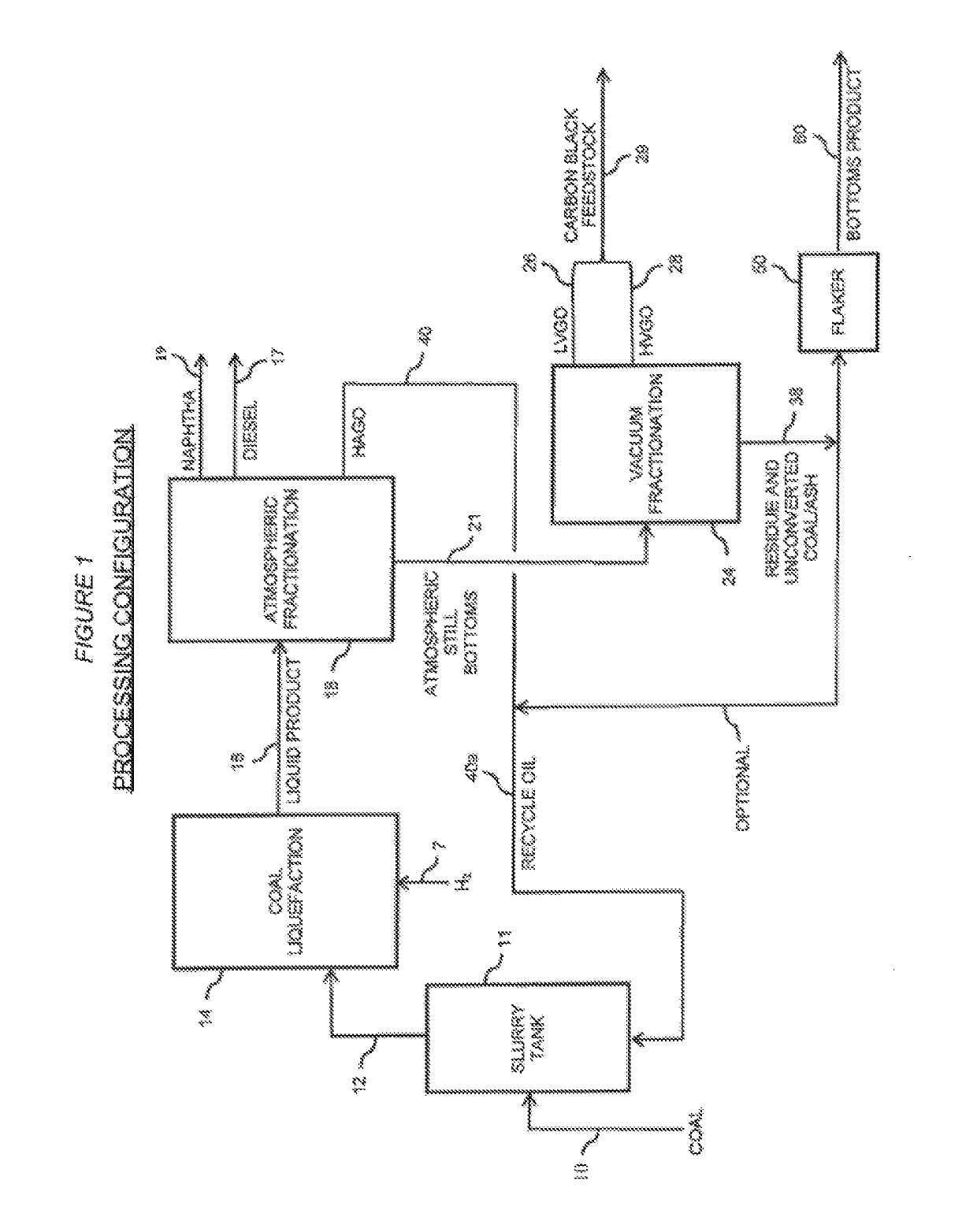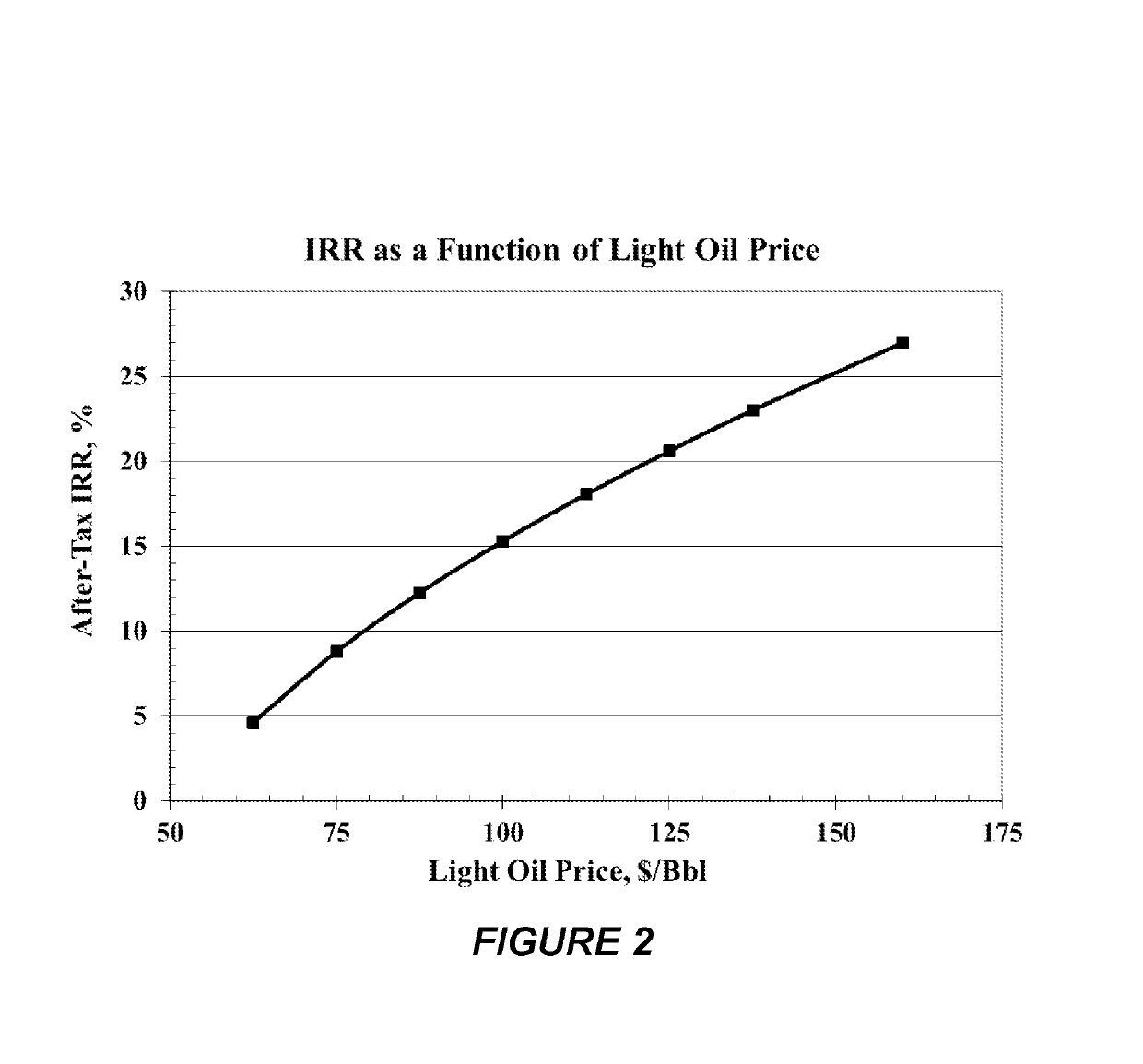Carbon black feedstock from direct coal liquefaction
a technology of direct coal liquefaction and feedstock, which is applied in the direction of pigmenting treatment, liquid hydrocarbon mixture production, hydrocarbon oil treatment, etc., to achieve the effect of reducing the catalyst inventory and daily catalyst replacement rate, reducing the catalytic activity level, and optimizing the level of catalytic activity
- Summary
- Abstract
- Description
- Claims
- Application Information
AI Technical Summary
Benefits of technology
Problems solved by technology
Method used
Image
Examples
example
[0031]A modified DCL facility was designed and economics developed for the production of a carbon black feedstock meeting specifications. The modified DCL Plant operating processes 10,000 STPD (dry basis) of a U.S. bituminous coal. DCL Plant operating conditions relative to the typical DCL conditions are shown in Table 1 below:
[0032]
TABLE 1TypicalModifiedDCL-DCL-Carbon VGOBlack FeedstockRecycleProductionFeedrate, STPD (MF)10,00010,000Number of Reactor Stages22Reactor TemperatureTTReactor PressureP0.8 PCatalyst Replacement RateC0.3 C
[0033]The yields and product qualifiers from the modified DCL Plant are based on many years of pilot plant and commercial operation and are summarized in Table 2 below:
[0034]
TABLE 2Yields, w % of Moisture and Ash Free (MAF) CoalGases17.2Naphtha15.6Diesel13.7VGO (Carbon Black Feedstock)29.1Unconverted Coal / Heavy Oil29.1Total C5 to 1000° F. liquids 58.4(Naphtha, Diesel, VGO)Hydrogen Consumption, w %4.7Selectivity of liquids to carbon black feedstock49.8%Car...
PUM
| Property | Measurement | Unit |
|---|---|---|
| temperatures | aaaaa | aaaaa |
| temperatures | aaaaa | aaaaa |
| temperatures | aaaaa | aaaaa |
Abstract
Description
Claims
Application Information
 Login to View More
Login to View More - R&D
- Intellectual Property
- Life Sciences
- Materials
- Tech Scout
- Unparalleled Data Quality
- Higher Quality Content
- 60% Fewer Hallucinations
Browse by: Latest US Patents, China's latest patents, Technical Efficacy Thesaurus, Application Domain, Technology Topic, Popular Technical Reports.
© 2025 PatSnap. All rights reserved.Legal|Privacy policy|Modern Slavery Act Transparency Statement|Sitemap|About US| Contact US: help@patsnap.com


